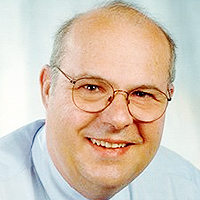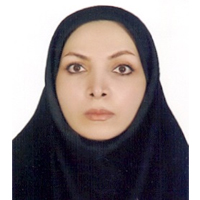Sequence-independent single-primer-amplification (SISPA) as a screening technique for detecting unexpected RNA viral adventitious agents in cell cultures
Published on: 12th March, 2021
OCLC Number/Unique Identifier: 8982622827
The sequence-independent, single-primer amplification (SISPA) enables the random amplification of nucleic acids, allowing the detection and genome sequencing of different viral agents. This feature of SISPA method provides evidence for application of it in monitoring the presence of adventitious RNA viruses in cell cultures. We evaluated SISPA method for the detection of a challenge RNA virus representing adventitious agent in cell cultures. Besides, by optimizing the SISPA method in our laboratory, we found false-positive results on negative control lanes in electrophoresis gels. To investigate the sources of contamination, false-positive results of SISPA were cloned into Escherichia coli cells, sequenced, and phylogenetically analyzed. This data revealed that the SISPA method can be used as an adjunct method to confirm the absence of unexpected adventitious RNA viruses in cell cultures. The phylogenetic analysis of SISPA contaminant sequences showed that the false-positive results were caused by nucleic acid amplification of commercial cDNA synthesis kit reagents, probably tracing back to expression plasmids and host ribosomal sequences, used for the production of enzymes. Therefore, laboratories using random amplification methods must be constantly aware of the potentials of such contaminations, yielding false-positive results and background noise in the final NGS reads.
Changes in the frequency and intensity of Tinnitus using the Suppressive Noise Spectrum
Published on: 21st July, 2017
OCLC Number/Unique Identifier: 7325433767
Objective:To report findings of improvement in patient tinnitus intensity and changes in frequency using a novel suppressive noise spectrum.
Design: Single-subject; each subject served as his or her own control. Each patient received treatment, and changes were measured over time.
Setting: Tertiary referral via university otolaryngology and hospital audiology as well as audiology clinics in the region.
Patients: Fifteen tinnitus ears in 8 patients.
Interventions: Therapeutic and rehabilitative.
Main Outcome Measures:: Tinnitus frequency, tinnitus intensity, and tinnitus questionnaire.
Results (Findings): After 3 months of exposure to the customized suppressive noise spectrum therapy, patients showed a shift in tinnitus frequency in addition to a significant decrease in tinnitus intensity from the pre-treatment to post-treatment condition (p<0.05). Typically, improvement was gradual based on comparing 3 sets of data collected at baseline, 1.5 months and 3 months.
Conclusion: Using suppression in tinnitus is novel. Based on our findings, using a customized suppressive noise spectrum is effective in shifting the frequency, reducing the intensity of subjective tonal tinnitus, and improving the handicap based on THQ test. From this seminal report, factors related to maximizing its effectiveness (e.g., length of listening time, level of hearing loss, and application for alternative tinnitus types) may be considered for future research.
Auditory effects and consequences of noise pollution in humans: A scoping review
Published on: 9th November, 2020
OCLC Number/Unique Identifier: 8796529862
Noise is widespread in everyday life and can cause both auditory and non-auditory health impacts. Noise-induced hearing loss remains highly prevalent in occupational settings and is now increasingly caused by exposure to social and environmental noise. Incidence of noise-induced hearing loss (NIHL) has been observed to increase substantially in the recent years. Several advances have taken place in past few years for understanding the molecular basis of NIHL. Our understanding of molecular mechanisms implicated in noise-induced hair-cell and nerve damage has significantly increased. Research in the field of genetics is also advancing at a rapid speed, and several genes linked to NIHL have been discovered. This could help in developing preventive and treatment strategies. This review article focuses on the current research and future trends on auditory effects and consequences of noise pollution in humans, stressing the importance of adequate noise prevention and mitigation strategies as a public health measures.
Neural Network Calculator of Rubber Characteristics with Improved Properties
Published on: 28th August, 2023
A new technique for the use of Artificial Neural Networks (ANN) for the generalization and visual presentation of the results of experimental studies is proposed. The possibility of using ANN for cases for which their use was previously considered impossible is shown. ANN calculators have been created that summarize the results of experimental studies on the effect of trans-polynorbornene and basalt fiber on the characteristics of a rubber compound based on general-purpose rubbers (isoprene SKI-3, butadiene-methylstyrene SKMS-30ARK and butadiene SKD), which also contained vulcanizing agents (N, N′-dithiodimorpholine, thiuram D), vulcanization accelerators (sulfenamide C, 2-mercapto-benzothiazole), vulcanization activators (zinc white, stearic acid), emollients (industrial oil I-12A, rosin) and antioxidants (acetonanil H, diaphene FP). The rubber mixture was prepared on laboratory rollers LB 320 160/160. Subsequently, the rubber mixture was vulcanized in a P-V-100-3RT-2-PCD press. For the resulting vulcanizates, the physical and mechanical properties and their changes were determined after daily exposure to air and in a standard SZhR-1 hydrocarbon liquid at a temperature of 100 °C. We also studied the change in the mass of vulcanizates after exposure to industrial oil I-20A and water. The dynamic parameters (modulus of elasticity and mechanical loss tangent) of vulcanizates, which characterize their noise and vibration-absorbing properties, were studied on a Metravib VHF 104 dynamic mechanical analyzer. The created ANN calculators allow solving a direct problem - interpolating the dependences of all rubber characteristics on the content of basalt fiber, as well as solving inverse problems - to determine the required content of basalt fiber to create rubber with the required performance properties. The autonomous executable modules of the calculators developed by ANN were made and can be passed to everyone.
Browse by Subjects
Chemistry Group Journals
Pharma Group Journals
Mathematics & Physics Group Journals
Clinical Group Journals
- Archives of Food and Nutritional Science
- Annals of Dermatological Research
- International Journal of Clinical Microbiology and Biochemical Technology
- Journal of Advanced Pediatrics and Child Health
- Journal of Pulmonology and Respiratory Research
- Insights in Clinical and Cellular Immunology
- International Journal of Clinical Anesthesia and Research
- Journal of Clinical Intensive Care and Medicine
- Journal of Clinical, Medical and Experimental Images
- Journal of Neuroscience and Neurological Disorders
- Insights in Veterinary Science
- Journal of Stem Cell Therapy and Transplantation
- Archives of Asthma, Allergy and Immunology
- Journal of Child, Adult Vaccines and Immunology
- Archives of Cancer Science and Therapy
- Clinical Journal of Nursing Care and Practice
- Annals of Clinical Gastroenterology and Hepatology
- Journal of Hematology and Clinical Research
- Archives of Pathology and Clinical Research
- Annals of Clinical Hypertension
- Journal of Oral Health and Craniofacial Science
- International Journal of Clinical and Experimental Ophthalmology
- Journal of Radiology and Oncology
- Journal of Clinical Nephrology
- Archives of Clinical and Experimental Orthopaedics
- International Journal of Bone Marrow Research
- International Journal of Clinical Virology
- New Insights in Obesity: Genetics and Beyond
- Advanced Treatments in ENT Disorders
- Journal of Clinical Advances in Dentistry
- Insights on the Depression and Anxiety
- Heighpubs Otolaryngology and Rhinology
- Clinical Journal of Obstetrics and Gynecology
- Archives of Surgery and Clinical Research




